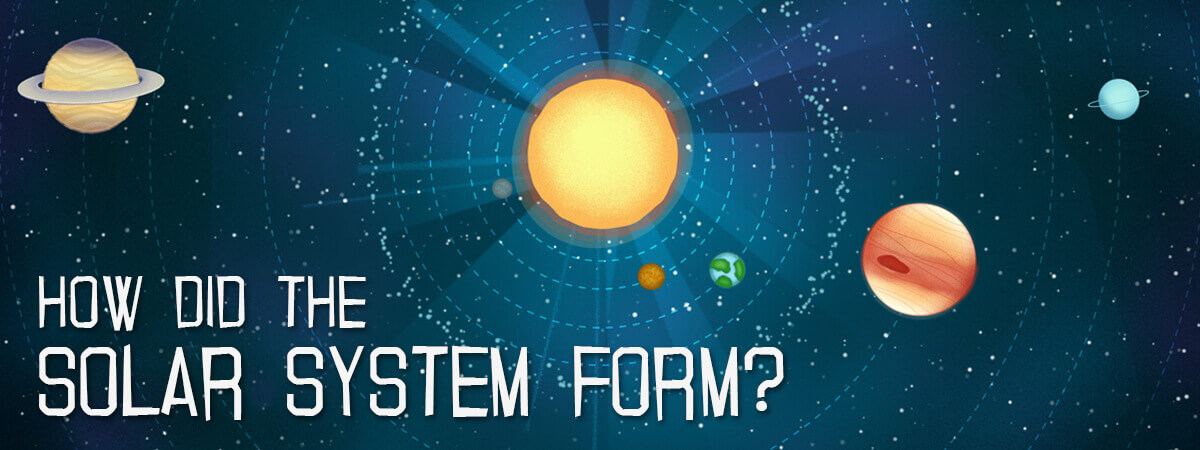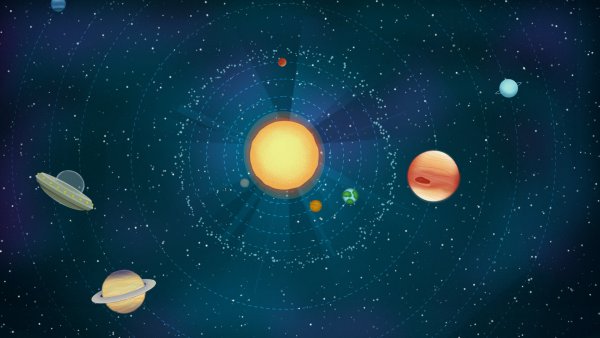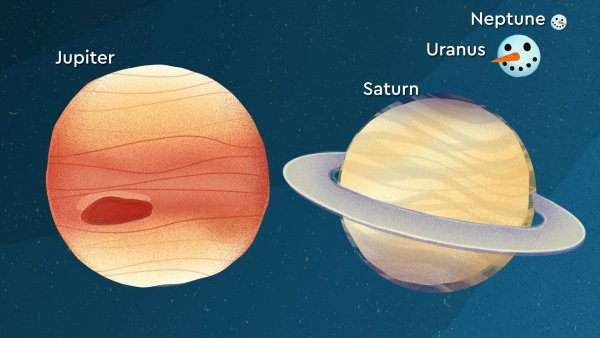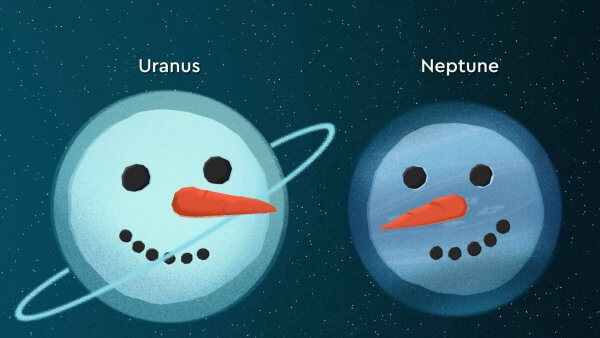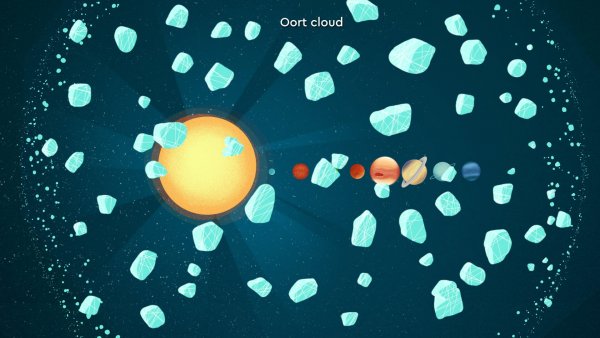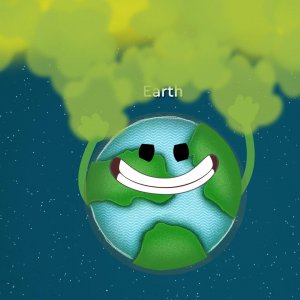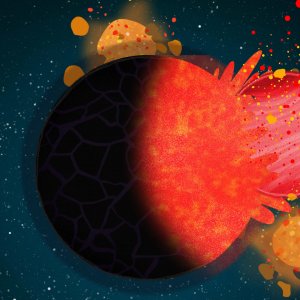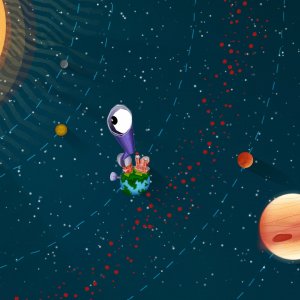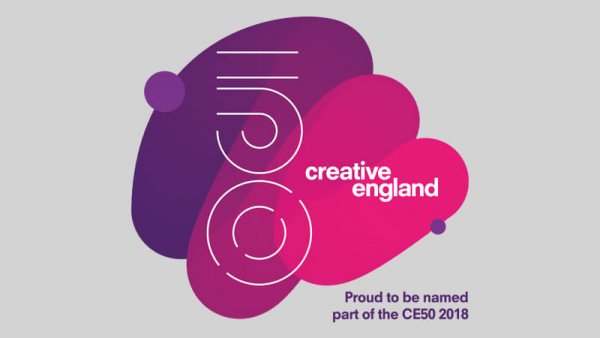Orbiting around our Sun we find asteroids, comets and planets with their moons. But how did our Solar System form? If we had to summarize how the Solar System was formed, we could say:
A cloud of gas started to collapse onto itself; and when the centre got really hot, our Sun was born. Over time, due to magnetism and gravity, the rocky planets, the ice giants and the gas giants formed and become the planets we know today.
Of course, it was a little more complex than this, and it happened over a very long time. We teamed up with the Royal Observatory Greenwich to answer this question by means of an animated video. Our aim was for children as young as 7 to understand the timeline of our Solar System’s formation in a fun and engaging way. Follow along with our images and explanation below, or skip straight to the video at the bottom.
First, our Sun
Around 4.5 billion years ago a cloud of mostly hydrogen gas and dust, started to collapse onto itself. It spun faster and faster, flattening out to form a disk with a dense centre. This centre got so hot, it started making light and our Sun was born. Around our baby Sun there was still a spinning disk of gas and dust. Over time it cooled and came together due to magnetism and gravity.
Close to the Sun, metals and rocks began to form but it was still too hot for other materials to become solid – they remained as gases.
Jupiter and Saturn
Further from the Sun, where it was cooler, water and other ices could form. They came together to make larger pieces called planetesimals which then joined to make large planets. These planets had enough gravity to capture the surrounding gas and became the gas giants, Jupiter and Saturn.
Some scientists think Jupiter formed first and was pulled in towards the Sun by the swirling material in the inner disk.
When Saturn formed, it moved inwards too. The planets got closer and swept up the gas between them. They then began to journey outwards together. Jupiter’s large size stopped rocky material clumping together; the asteroid belt is full of these rocky scraps of the Solar System.
It might also explain why Mars is smaller than expected – when Jupiter moved inwards it fed on lots of material so later Mars had less to form from.
The Rocky Planets & Ice Giants
In the inner Solar System, chunks of metal and rock slowly came together to create the rocky planets. Within 100 million years, early planets were orbiting the Sun with lots of leftover material in between.
The young Sun had a phase of releasing strong winds; it blew the extra gas outwards stopping the rocky planets and early gas giants from growing. The outwards moving gas was pulled in around the snowball cores of the ice giants Uranus and Neptune in the outer Solar System.
Many of the leftover ice balls flew out into the spherical Oort cloud. They occasionally got flung inwards becoming comets and collided with the rocky planets. Perhaps comets brought ices and gases back to these planets providing material for their atmospheres and also bringing water to the Earth.
For the first billion years many stray pieces of rock and ice would have been flying around creating lots of collisions. The Earth’s Moon could be the result of a large object impacting the Earth. Similar impacts may have reversed Venus’ spin and knocked Uranus onto its side.
- Gas blown from the sun stopped the rocky planets (Earth) from growing
- A large object impacting Earth could explain the moon’s formation
- ROG looking to distant stars with exo-planets to see how they form
Some of the planetesimals still floating around were captured by the giant planets to form Moons around them. Scientists are looking to distant stars with exo-planets to see how they form.
Maybe then, we’ll know if we truly live on a unique planet in a very special Solar System.
The above, simple explanation was supplied by ROG astronomers Dr Greg Brown and Dhara Patel. They added these words to say about the project:
Each year at the Royal Observatory Greenwich, the education team develop new animated videos to add to our suite of resources created for teachers and students. We aim to produce curriculum-linked astronomy videos that clarify common questions which also lead to intrigue in the subject.
This is the second year we have chosen to work with Slurpy Studios to create our videos. The team understand our brief and audience very well. As such they have created bright and humorous films with a distinct visual style that we absolutely love. They make the feedback process incredibly simple and are very flexible, making them a great company to work with.
We are really pleased with the films this year; the blend of the visual style, colour palette and music have resulted in three fantastically animated films which we’re sure will be a hit with not only our schools audience but the wider public too.
To further understand how our Solar System was formed, watch our film on how Collisions and Explosions in the Universe have shaped the planets, moons, and stars. More information about the project can be found here, (and if you are still curious, you can find out Where Space Begins, here).
